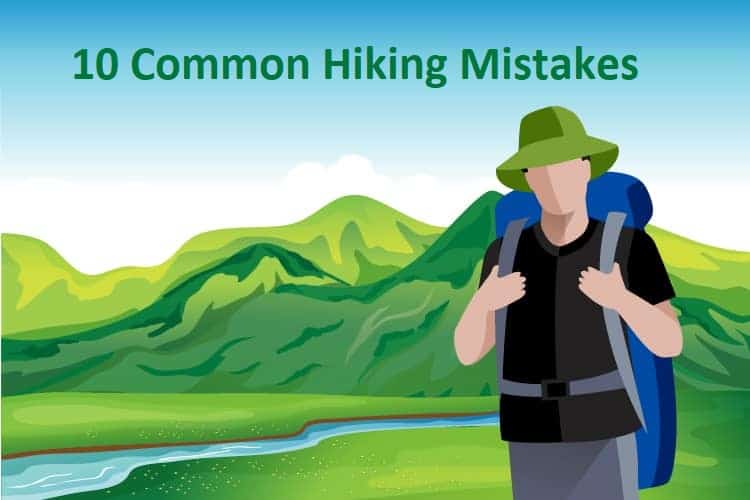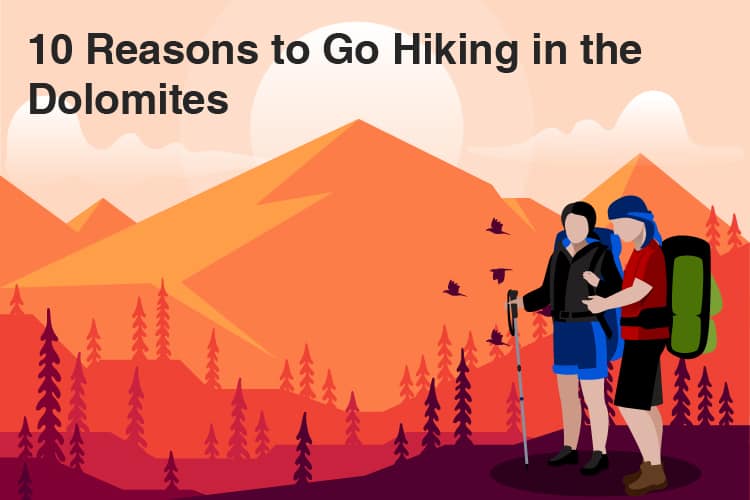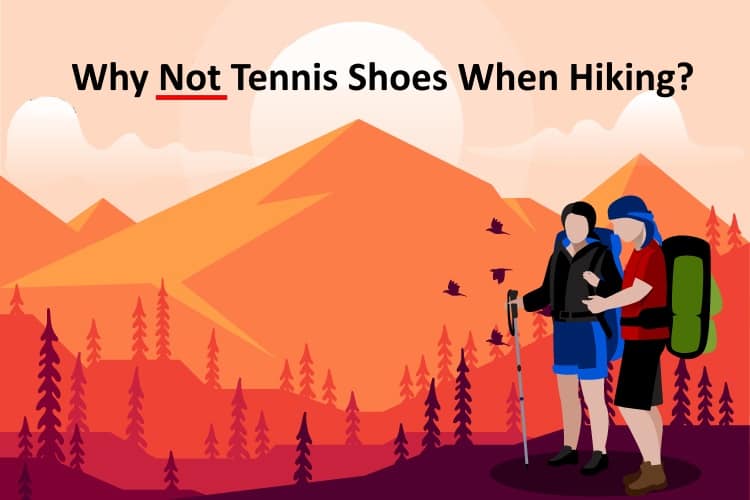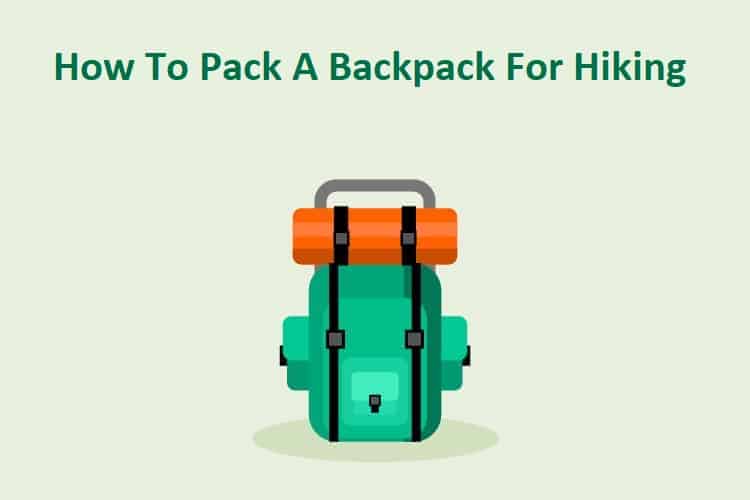“By seeking and blundering we learn.”
Johann Wolfgang von Goethe
He may have been able to turn out a cracking line or two of prose, but German poet and author Goethe clearly wasn’t much of a hiker.
Had he been, he would have known that the consequences of blundering while smack bang in the middle of nowhere, halfway up a mountain, and entirely on your lonesome should things turn seriously south are not quite so laudable or praiseworthy as his words would seem to suggest.
While many of the mistakes made by hikers are easily done and there’s undoubted value in erring in order to be edified, it would just be a whole lot better and easier if we could just bypass all that erring and mistake-making and skip straight to the fun, right?
To that end, we’ve compiled a list of the top ten hiking mistakes and the remedial or preventative measure you can take to avoid them.
The Top 10 Hiking Mistakes…and How to Avoid Them
1. Overpacking
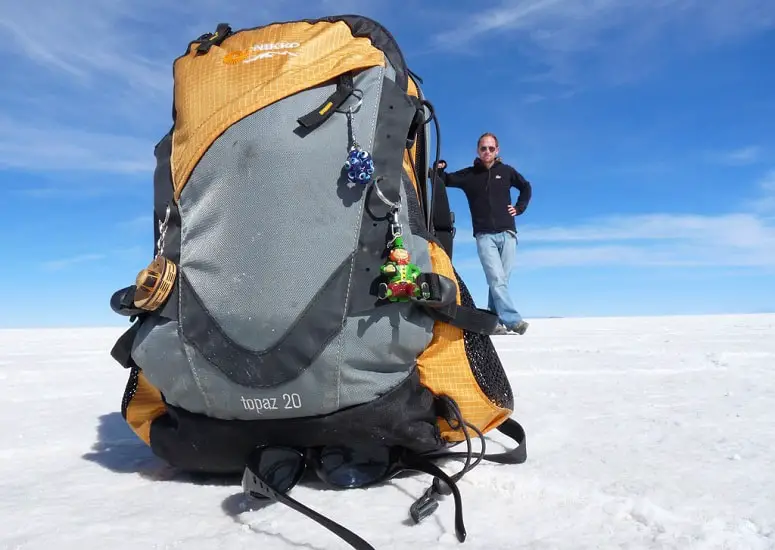
If I could offer one piece of advice to any hiker out there—newbie or not—it would be this: if you don’t absolutely need it, leave it at home.
While there are certainly essential, must-have items that every hiker should pack on any given outing, too many of us are prone to carry way too much stuff, much of which we will either never get around to using or that merely weighs our pack down unnecessarily without giving us enough in return to justify its place in there.
The cure?
Go through your kit list with a fine-toothed (metaphorical) comb, identifying any items that are redundant or fall into the category of “comfort items.”
While we’d be loath to deprive you of your creature comforts, it’s well worth remembering that in most cases you’ll only get to enjoy those comforts after a hard day on the trails, by the end of which you may well be regretting having carried it and view any comfort it may bring as poor compensation and scant consolation for the slog endured to schlep it there.
2. Poor Navigational Skills/Getting Lost
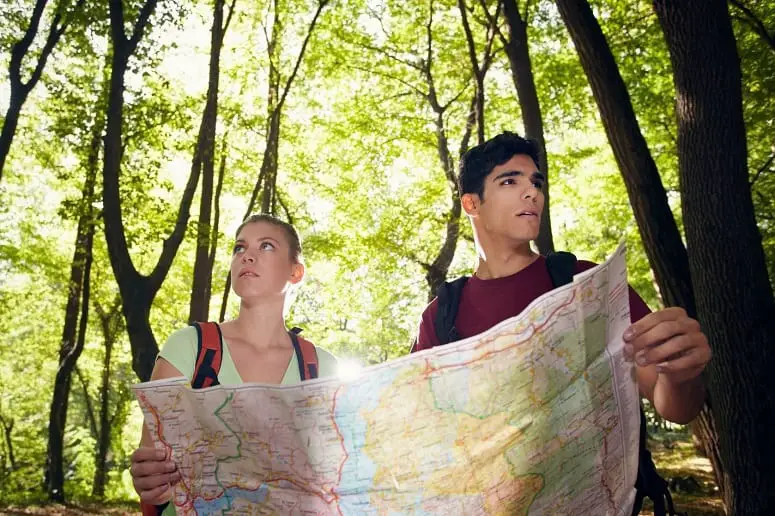
Many hikers are apt to think that the presence of signs and waymarking excuse them from the need to learn navigational skills with a map and compass.
These hikers, in most cases, are the ones you read about on the news or find fretting at the side of the trail desperately trying to get a signal on their smartphone to access their online GPS.
While many trails around the globe are blessed with very extensive signage, in many cases this can lead (if only subconsciously) to complacency and a false sense of security.
Things are sure to be swell and trouble-free when the skies are clear and the signs or waymarking flashes remain frequent, but what about when the weather takes a turn for the worse?
When visibility drops to near zero?
If snow is covering the waymarkers?
If, for any reason, we can’t decide on which path to take at a fork in the trail? Or if you want to take a detour to visit some feature or landmark that’s off-trail?
The cure? Study up on the use of a map and compass and practice on local trails until you are confident and able to use triangulation, walking on a bearing, and contouring to navigate safely even when conditions aren’t working in your favor.
3. Overlooking “The Ten Essentials”
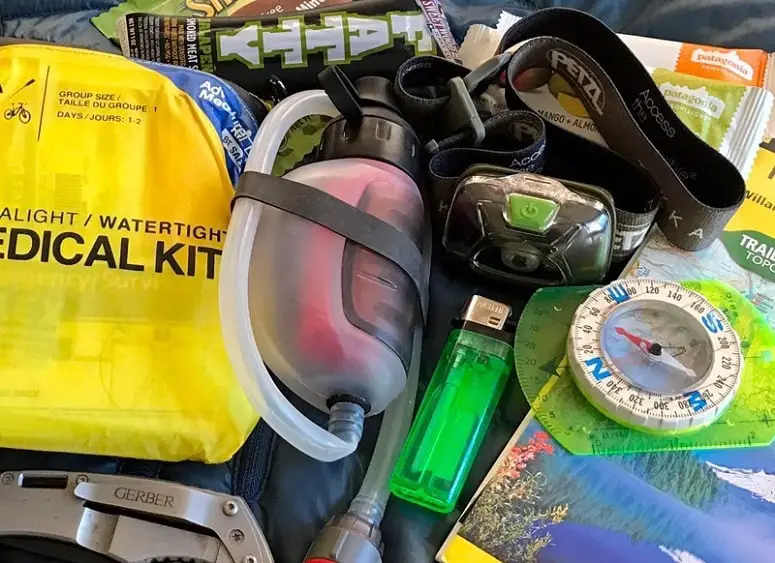
Although the list of the “Ten Essentials of Hiking” has evolved somewhat since first published in 1974, the gist of the items featured remain much the same to this day, and, as the name suggests, are every bit as essential to the modern-day hiker as they were back in the day.
While many hikers are apt to fret over whether or not they have forgotten items that, at the end of the day, they could easily do without, their attention to these non-necessities or a touch of over-confidence or simple carelessness can cause them to overlook these ten absolutely must-have items:
- Navigation
- Shelter
- Sun protection
- Insulation/Adequate Clothing
- Fire
- Hydration
- Nutrition
- Illumination/Lighting
- First-aid supplies
- Toolkit
The cure? Familiarize yourself with the list and use it as your go-to guidance when packing for any trip in the backcountry.
4. Poor Gear Choices
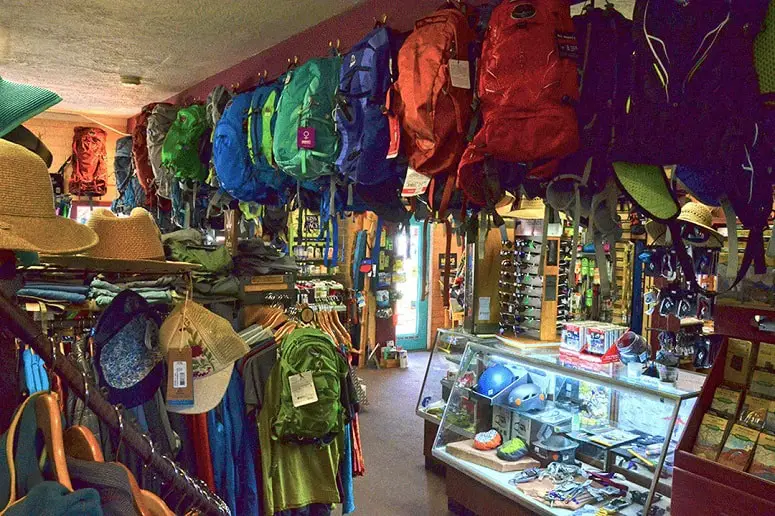
Many newcomers to hiking rush out and buy themselves a shedload of new gear before really considering exactly how they plan to use it or whether or not it will be suitable for the type of activity they envision getting up to.
The most common culprits are your backpack, footwear, and trekking poles.
We’ll start with the entry that’s sure to have raised a few eyebrows…
Trekking poles
Once the sole preserve of backpacking octogenarians, trekking poles are now de rigueur for hikers, trekkers, and mountaineers the world over.
And yet, many novice hikers assume that choosing to use trekking poles is some admission of fragility or gullible consumption practices and, as such, opt to pass on a purchase and go pole-free.
But the benefits of using trekking poles are simply too compelling to ignore: they improve posture, reduce the impact on your knees, reduce fatigue, improve balance, provide stability on more exposed trail sections, and can be used to fend off wildlife, pitch a tarp, or make an improvised stretcher or splint in the event of a serious injury.
The cure? Read up on the many benefits of using trekking poles, be converted, buy yourself a pair, live happily ever after.
Backpack
The only thing worse than an ill-fitting backpack are ill-fitting boots (more on them below). Many newcomers to hiking tend to buy their backpack based on their6 capacity and brand name alone, but a number of other factors go into making a backpack the right one for your specific body shape and activity type.
The cure? Make sure you choose a pack that can be fitted to your body shape and torso length and take other factors such as weight distribution, cushioning, and compartmentalization into consideration before buying.
Footwear
While any shoes or boots are sure to become instruments of torture at some point if ill-fitting or poorly made, the most common mistake we see on the trails is not so much the fit or quality of the footwear, but the choice of footwear.
In short, certain footwear is better suited to certain trails than others, and by choosing unwisely you could be setting yourself up for a lot of discomfort, injury, or simply weighing your feet down far more than is necessary.
The cure? Assess the trail type you’ll be tackling carefully before heading off in order to determine just what will be required of your “walkers”.
In some cases, those 3-pound hiking boots will be overkill and only increase the risk of premature leg fatigue; in others, your ankle-height trail shoes will leave you with a pair of sodden insoles, scuffed and scraped ankles, and increase the risk of incurring a sprain or serious chill from remnant snow on the trail.
5. Poor Trail Selection
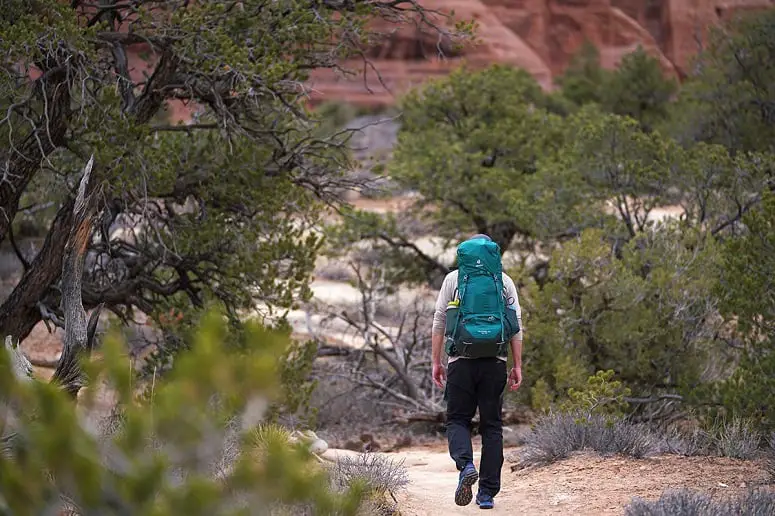
The old English expression “horses for courses” warns us that certain horses are better suited to some tracks than they are to others. And the same is true of hikers and their trails.
Many over-enthusiastic newbie hiker preps for their outing by doing some very cursory research and then blithely set off to take on their chosen trail only to discover the challenge presented is way above their pay grade in terms of the terrain, distance, or the technical nous required.
The cure? Do your research before choosing your trail to ensure you aren’t biting off more than you can chew.
6. Choosing the Wrong Trail Food

Our bodies are never in more need of good nourishment than when we’re putting them through all the exertion, toil, and tribulations they’re sure to experience on the trail.
While some hikers are apt to think that all those calories we’re burning when hiking give some leeway for a more lax approach to nutrition, the truth is that such an approach is sure to detract from what our bodies give us in return.
The cure?
A simple shift in mindset should cover this one. Once you understand and see for yourself that healthy trail food will work wonders for your performance and how you feel while hiking, ditching the overdose of carbs and comfort foods will be, for most, far more easily done.
7. Not Hydrating Properly
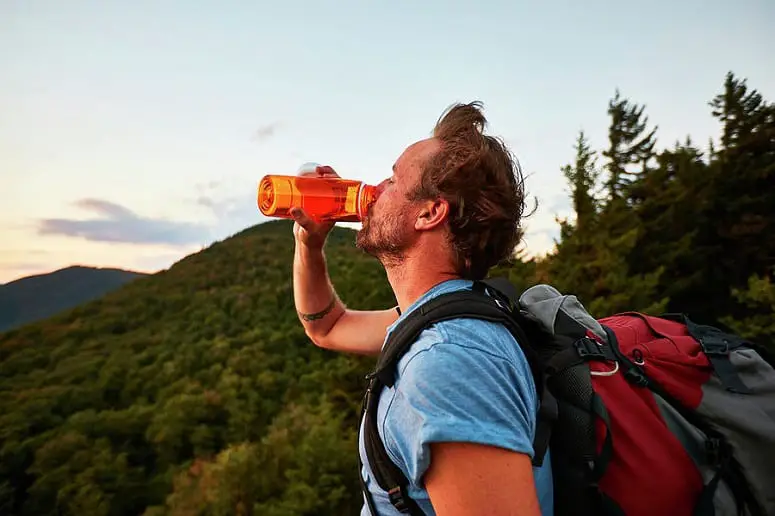
When hiking, drinking enough fluids to replace those lost to sweat and exposure to the elements is essential in order to optimize our performance and stay healthy for the duration of our hike.
But with so many other factors occupying our minds, many of us are apt to forget to take care of this absolutely fundamental obligation.
The cure? Aim to drink at least one liter of water for every two hours of hiking and up your intake to a liter and a half or two liters if hiking in particularly hot and sweaty conditions.
To ensure you can get your fill of H20, carry both a go-to water purification system (filter, ultraviolet sterilization pen, chemical formula/pills) and a backup system. It’s also a good idea to identify reliable water sources on your route before leaving home to get an idea of just how much water you’ll need to carry at each stage.
8. Lack of Rest Stops
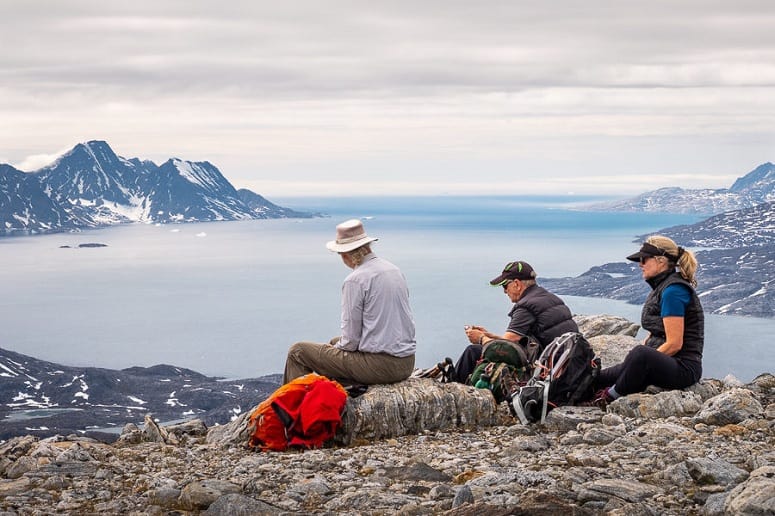
Putting in hour after hour on the trail can take its toll on our bodies. In addition to the general fatigue resultant from our exertions, after a certain point our feet, calves, backs, and various other parts of our anatomy can start screaming out for a little let up in the slog.
At such times, hikers generally react in one of two ways: first, they ignore the aches and pains and soldier on regardless; secondly, they doff their sacks and boots, maybe hang up their hammock for a bit of a snooze, gorge themselves on whatever goodies they may have in their pack, and while away an hour or two until ready to move on again.
While the second option is not necessarily an issue if you have time on your hands, the first almost invariably leads to injury (most accidents happen when you’re tired) or at the very least will seriously diminish your enjoyment of your hike.
But a happy middle-way and third option exists. It consists of taking short, 5-minute breaks for every hour of hiking, thereby giving your muscles and lungs a breather whilst also ensuring you don’t cool down so much as to risk a dose of the chills (or even hypothermia) or for your muscles to tighten up.
The cure? Listen to your body—it will give you a far more accurate idea of when you should be taking breaks than maps, trip reports by other hikers, or any preconceived notions you might have of how many miles you should be putting in between rest stops.
9. Poor Route Planning
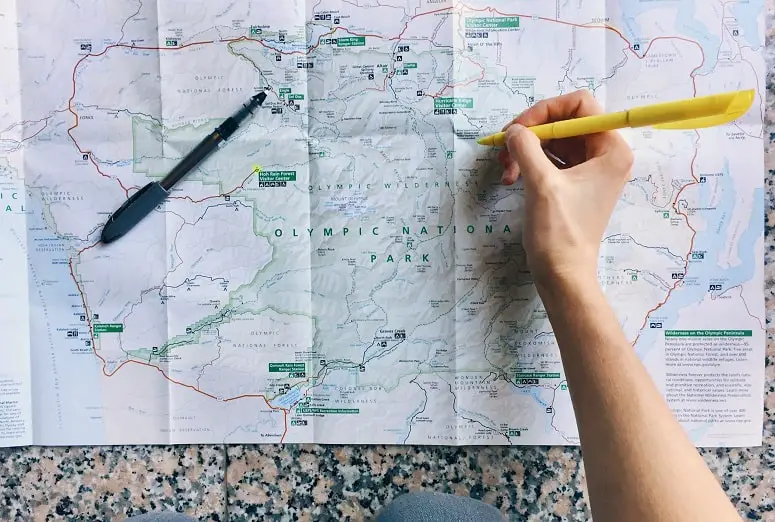
The vast majority of experienced hikers have done it at some point in their hiking career—they set off, put in some serious mileage, and relax into their hike only to then happen upon some serious impediment to progress: a snow-bound pass, a section of trail closed for reconstruction, an unfordable river, or a 3,000-foot ascent to get back to the trailhead or terminus when already running very low on “gas.”
The cure? Do your research before heading off, paying close attention to maps, elevation gains, and drops, reading trail descriptions online and guidebooks and being sure to check park, wilderness, or recreation area websites for trail updates.
10. Inadequate Clothing

All too many rookie hikers take an “anything goes” approach to how they attire themselves for their first few hikes.
While we wouldn’t want to appear pushers for the wheel of consumerism that’s spinning largely out of control in the hiking world, the bottom line with regard to the clothing required for hiking is that your every day, “civvy” duds just aren’t going to cut it on anything but the gentlest, shortest, and most sun-kissed of trails out there.
Given that some of the ailments that potentially await the inappropriately attired hiker include hypothermia, frostbite, frostnip, blisters, chafing, sunburn, and sunstroke, what you wear while wandering the wilds is, well, kinda important.
The cure? Bite the bullet and invest in a solid layering system, gloves, hat, sunhat, waterproofs, and, above all else, avoid cotton like the plague or make it waterproof…
References:


